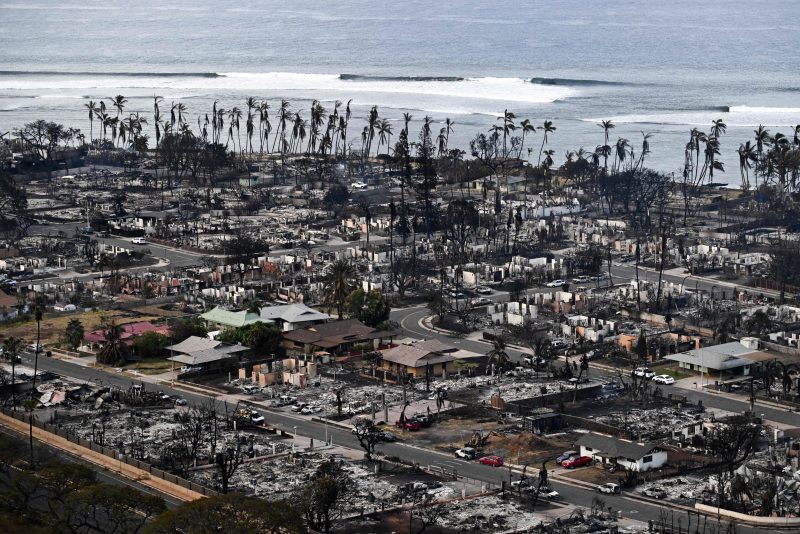

OAN’s Stephanie Stahl
11:10 AM – Sunday, November 12, 2023
A wildfire that ravaged a Hawaii rainforest is part of a shifting reality for the typically lush island state, coming just months after a devastating blaze on a nearby island burned an entire town, claiming the lives of at least 99 people.
Advertisement
Although the recent rainforest fire on Oahu caused no injuries or home destruction, it consumed mountain ridges and devastated irreplaceable native forestland, threatening nearly two dozen fragile species.
The underlying cause mirrors the conditions that led to the historic town of Lahaina’s destruction in Maui, a severe drought exacerbated by climate change is sparking fires in Hawaii’s previously untouched areas.
“It was really beautiful native forest,” said JC Watson, the manager of the Koolau Mountains Watershed Partnership, which helps take care of the land.
He recalled it had uluhe fern, which often dominate Hawaii rainforests, and koa trees whose wood has traditionally been used to make canoes, surfboards and ukuleles.
“It’s not a full-on clean burn, but it is pretty moonscape-looking out there,” Watson said.
The occurrence of this fire on the typically wet and windward side of Oahu is a concerning signal of environmental change, according to Sam ‘Ohu Gon III, a senior scientist and cultural adviser at The Nature Conservancy in Hawaii.
The majority of the fire occurred within the Oahu Forest National Wildlife Refuge, a habitat for 22 species classified as endangered or threatened by the U.S. government.
These species include iiwi and elepaio birds, a tree snail named pupu kani oe, and the Hawaiian hoary bat, also known as opeapea. The U.S. Fish and Wildlife Service, responsible for managing the refuge, is yet to determine the extent of damage or harm to plants and wildlife caused by the fire, as stated by spokesperson Kristen Oleyte-Velasco.
The fire began on Otcotober 30th and has engulfed 2.5 square miles (6.5 square kilometers) and was reported to be 90% contained as of Friday. Authorities are actively investigating the cause of the blaze, located approximately 20 miles (32 kilometers) north of Honolulu.
While the burn area might appear modest in comparison to wildfires on the U.S. mainland, where hundreds of square miles can be affected, Hawaii’s native ecosystems are inherently limited in size.
This is particularly true for smaller islands like Oahu. Consequently, even relatively confined fires can have extensive and lasting repercussions. A significant concern revolves around the uncertainty of which plants will emerge in lieu of the native forest.
The native plants in Hawaii have evolved without experiencing recurrent fires. Subsequently, after a fire, faster-growing non-native plants with a higher seed count typically take root, replacing native species.
Watson noted that an Oahu forest, situated near the recent fire, previously hosted uluhe ferns, koa trees, and ohia trees before a fire consumed less than a square mile of it in 2015. Presently, the area is characterized by invasive grasses that are more susceptible to fires and some gradually regenerating koa trees.
“It’ll never be able to be returned to its previous state within our lifetimes,” Watson said. “It’s forever changed, unfortunately.”
State authorities plan to request supplementary funding from the Legislature in the upcoming year to enhance firefighting equipment, establish firebreaks, introduce new water sources for fire suppression, undertake the replanting of native trees and plants, and facilitate seed storage initiatives.
Stay informed! Receive breaking news blasts directly to your inbox for free. Subscribe here. https://www.oann.com/alerts





Be the first to comment